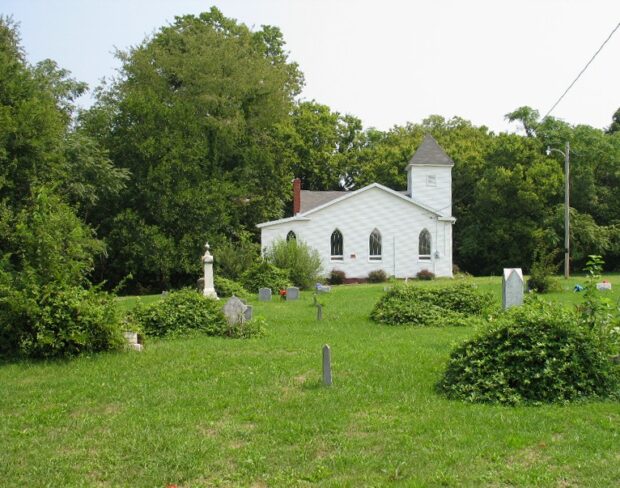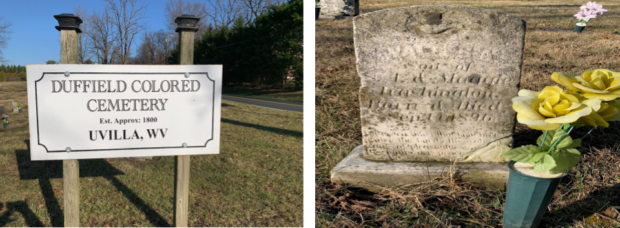Note: This article appeared in the January 18, 2023 edition of the Spirit of Jefferson
Living in Jefferson County, it’s almost unavoidable to turn a corner and not see some evidence of the county’s rich past. We see it in the historic buildings in each of our towns, the many historical markers along our roads, the weathered gravestones in our cemeteries, the museums displaying artifacts from our past, and the focus our tourism industry gives to our history, most notably our pivotal role in the Civil War.
The wealth of history in our midst attracts both professional and amateur historians, who together keep adding to the evidence and documentation of our past. It’s no exaggeration to say that the learning and doing of history occupies the attention of a lot of our residents.
The doing of history isn’t just focused on community history. It notably includes people interested in their own personal or family history. Especially now with the advent of DNA testing, internet searching and genealogical data, people can research many more details of their ancestry than was possible not so long ago.
The interesting questions posed in this article are not so much focused on the methods and detailed data that results from historical research. For that information, you can visit any number of places in person or online. There is, for instance, all the intricately researched data available from the Jefferson County Historical Society, whose curator, Doug Perks, contributes frequent articles to the History Matters column of this newspaper. You can see material artifacts in the Jefferson County Museum, the Shepherdstown Museum, and the “living history” exhibits of the Harpers Ferry National Historical Park. You can wander the numerous historical cemeteries in the county, including the Zion Episcopal Church’s graveyard in Charles Town, where many of George Washington’s family (but not George himself) are buried.

Instead, these are the interesting questions for this article: Why do people do history? And how does the community benefit from it?
On this second question, a word or two of introduction. When you consider that the days, weeks and years of 150 years ago were as long as they are now and that each individual from that time possessed objects and engaged in activities that we would now consider historical, there is a tremendous amount of information that could potentially interest historians.
Of course, anybody engaging with the massive scope of history will have to pick and choose what they want to explore and at what depth. They will be limited, of course, by the available evidence. You wouldn’t most likely be able to ever know for sure what your great-great-great-grandfather was doing at 3 p.m. on March 4, 1893, though you might be able to make an educated guess about it, if you know something about his occupation and where he was living at the time. History is both facts and educated guess work. If that distant relative, however, was Grover Cleveland, there would be a substantial likelihood that on that date and time, he was celebrating his inauguration as president.
Since historians pick and choose what they want to explore, how likely is it that they tend to favor one person over another, one event over another or one group over another? The likelihood is greater, as you might expect, if that person, event or group was significant in the past and left traces in written, audio or photographic records. On the other hand, if they were of lesser significance, the traces will be smaller, if they exist at all.
But here’s the real issue facing historians. Past significance isn’t necessarily a good indicator of what present day people find significant. Today, for example, we’re wanting to know more about the lives of black people in the 18th and 19th centuries than we have documentation for. We want to know more about how American Indian populations declined, causing their languages and cultures to be threatened or lost. We want to know more about our immigrant ancestors, what they left behind in the old world and how they coped in the new world. And so on. Dealing with questions of this sort is where historians have to be creative and persistent.
Take the case of many of the structures and institutions related to the history of African Americans in Jefferson County. These were people who were the slaves on the Washington family plantations, the builders of churches intended for their own worship, the people who attended segregated schools during the long Reconstruction period after the Civil War and whose remains are buried in numerous black and colored cemeteries across the county.
Not having a full record of their history, today’s descendents of these people are left with less knowledge of their ancestry. This untold history motivated a group of local American American descendents in the county to establish the Jefferson County Black History Preservation Society (BHPS) and to create the African American Heritage Trail documenting local places and events of significance to their community.
The effort it takes to chase down and assemble these pieces of history is considerable, and it points to the desire of a community to know itself, to rediscover and reconnect with its past. In the book the “Presence of the Past” written by Roy Rosenzweig and David Thelen, the authors found a wide gap between whites and blacks in how they rated their interest level and trust in historical accounts. Blacks, by a wide margin, showed more skepticism of history, an indication that they feel black history has not been fairly or fully told. A telling example can be seen in the evidence of how black individuals were memorialized in their segregated cemeteries, many with hand chiseled epitaphs often on irregularly shaped stones or lacking stones at all.
I spoke for this article with several historians, amateur and professional, who are involved with the histories of black cemeteries and the individuals buried there. Stephen Brooks, a homeowner near Uvilla, had a view of a neglected cemetery from his home, one which was ultimately determined to inter as many as 100 individuals. His grandson, Travis Barnette, with a go-ahead from the BHPS, took on the restoration of the cemetery as an Eagle Scout project. On completion of the work, Brooks and a local resident Giselle DeGrafenreid assumed the task of regularly maintaining the grounds. Addison Reese, a member of the Jefferson County Landmarks Commission, helped in the restoration of individual stones, photographed them and posted the photos to the Find a Grave website.

Brooks had a marker constructed and placed, referring to its historical name, the Duffields Colored Cemetery. The end result of this ongoing project in the words of DeGrafenreid has been to restore “a sense of respect” to these once neglected individuals, a sentiment that Brooks seconded.
This example is not isolated. Reese, for example, has made the documentation and preservation of black cemeteries a personal cause. At this point she is one of the most knowledgeable persons in the county on their location and condition. Her particular project involves the St. Paul Baptist Church Cemetery in Kearneysville where she exposes, rights and restores tombstones, in the process documenting inscriptions, photographing and posting information to the Find a Grave database.
Reese is motivated not only by the pure history of a site, but by the connections the facts give to living descendents. With black history she says: “Never think that you know it all. There’s always more to know,” admitting though that the work of finding more is often painstaking. She went on to say that preservation work only becomes valued by “being honest about what you know and don’t know.”
Reese is a talented historian who understands preservation work and applies her knowledge meticulously. But she defers to career historians in the field as the sources of that knowledge. Two people who fall into this category are Keith Alexander and Julia Sandy, both in the history department at Shepherd University. Alexander’s specialty is historic preservation, and he manages a degree program in that area which trains and sends into the workforce a number of students every year. Sandy’s specialty is social history, investigating past and current impacts of historical research. She, for instance, works with the Social Justice Committee of the Shepherdstown Presbyterian Church, which is dedicated to sorting out equity issues in the treatment of minorities and refugees.
I asked Alexander about his reasons as a preservation specialist for why cemetery preservation is important. He mentioned that cemeteries are among our “last surviving nature sanctuaries and sculpture gardens. They provide direct tangible references to the past and support genealogy.” They can also help document historical changes in how we view different social groups. He gave the example of how the language of women’s grave epitaphs has changed over the decades as they acquired greater social and political standing.
Sandy reiterated this position. As a specialist in cultural history she sees her subject area as being “not just about the past, but what we choose to know or remember about the past.” People like to see themselves and their ancestry in historical accounts and depriving them of that information perpetuates an uneasy feeling that they don’t belong. She mentioned, as an example, the research around the Joe Burns lynching in Martinsburg in 1886, culminating in a memorial erected to mark it. (This story was retold recently in a Neighborhood Watch column from Oct. 15, 2022.) The marker and the ceremony that accompanied the unveiling was a healing moment for Burns’ descendents, and not just because the injustice of the event was publicly acknowledged. More importantly was the underlying message it sent, namely, that history does matter.
As Sandy said, “What we choose to find out about, tells us about who we are now, as well as who we were then.”
Similar Posts:
- None Found